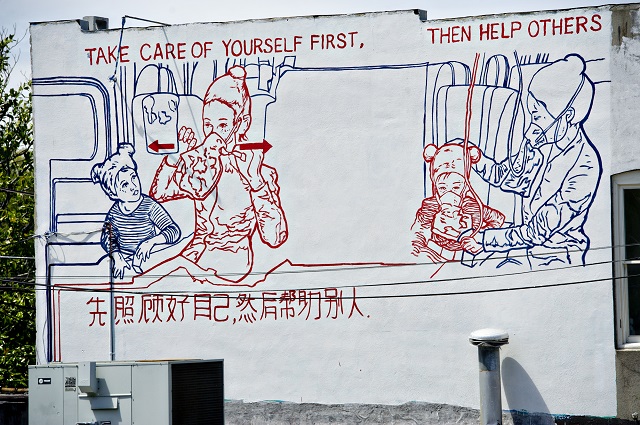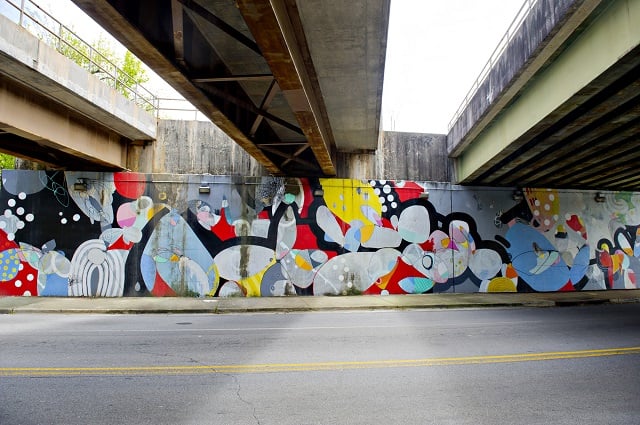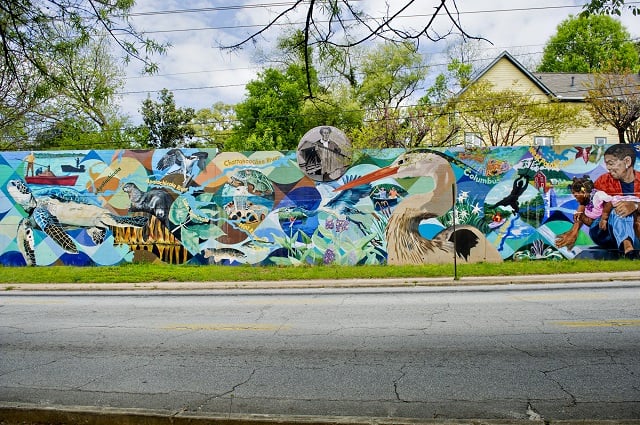Artistic differences – Ordinance faces tough critics
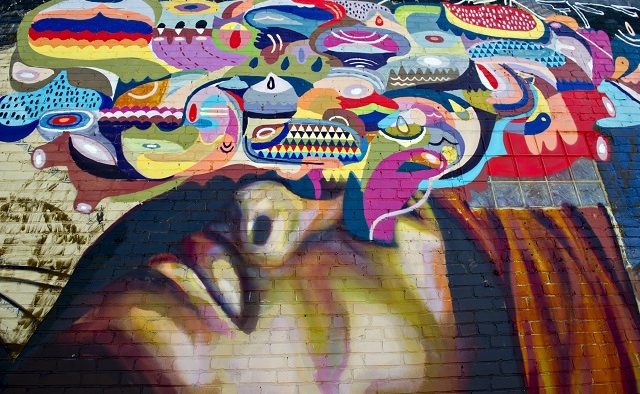 The mural at the corner of N. Candler and E. Howard on Thursday, April 17, 2014. Photo by: Jonathan Phillips
The mural at the corner of N. Candler and E. Howard on Thursday, April 17, 2014. Photo by: Jonathan Phillips
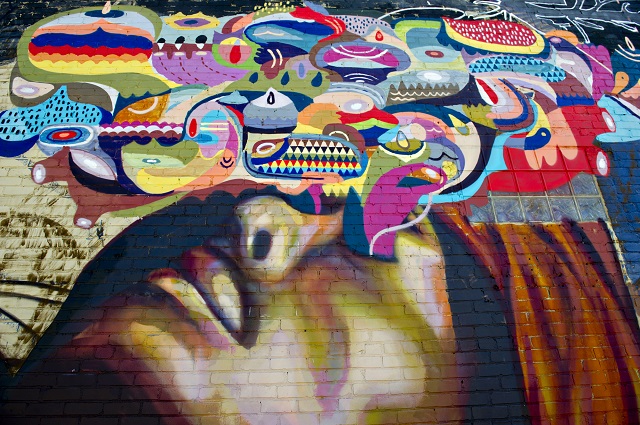
The mural at the corner of N. Candler and E. Howard on Thursday, April 17, 2014. Photo by: Jonathan Phillips
By Emily Chapman
Contributor
The Atlanta City Council has proposed changes to the process to approve a piece of public art, which they say will streamline the approval process and reduce wait times for artists. Some members of the local art community worry that the proposed changes—which call for review of the art by Neighborhood Planning Units—will open up the possibility of censorship for public works of art.
During the April 22 meeting of Kirkwood’s Neighborhood Planning Unit, NPU members voted overwhelmingly against supporting the idea, rejecting it by a 13-0 vote with one abstention. NPU Chairman Dana Blankenhorn said the ordinance is an infringement on the First Amendment, the right to free speech.
“Hopefully the (Atlanta City) Council is listening to the NPU votes and understand if they pass this, they’re slipping into trouble,” he said.
Despite the city’s claim that these changes will streamline the art approval process, the proposed changes have been interpreted as a response to controversies over murals painted by artists for the Living Walls conference. Since 2010, artists commissioned by Living Walls have painted large-scale street art on walls across town, much of which has been positively received. However, residents in the Pittsburgh neighborhood of Atlanta objected to a 2012 mural containing what some felt was demonic imagery, and Chosewood Park residents objected to a different 2012 mural showing a naked woman across the street from a church.
Atlanta City Council Member Joyce Sheperd introduced the legislation. She told WSB-TV that the law is about streamlining the application process for public art, not censoring it.
“It has taken us one year to write this legislation because as we wrote it, we wanted to make sure we did everything correct,” Sheperd said.
Monica Campana, co-founder and executive director of Living Walls, says that “what people need to know” is that there already is a process for approval of any proposed public art which involves outside review by the city council and the owner of the property where the work will be placed.
Campana worries that the proposed changes to the process will extend the timeframe for approval even further. She said that if the change is “a reaction to two controversial walls out of 100 that [Living Walls has] produced, we should look at this…as an opportunity for dialogue” with community residents about the art they want to see in their neighborhoods.
“We don’t want to be like Christopher Columbus,” she said in response to questions about community objections to the murals. “We have learned from our mistakes. Dialogues need to happen.”

The mural at the Rockyford Bridge at College Ave. on Thursday, April 17, 2014. Photo by: Photo: Jonathan Phillips
Kyle Brooks, the artist behind the Beltline Bears mural on the downtown portion of the Beltline trail as well as wooden “street poems” around town, objected to the idea that public art would be held to stricter standards than commercial signs. “Everyone gets upset about public art,” he said, “But they’re okay with random [graffiti] tags, or cash for cars posters, or junky, nasty billboards.”
If regulations on public art are increased, Brooks said, “I think they should do all public things….Any billboard, any sign.”
As it happens, the city of Atlanta is also considering an ordinance to regulate window signage around the city, which also came up at the April 22 NPU meeting. The proposed ordinance would regulate the size (limited to four square feet or covering more than 25 percent of the window) and number of the signs (no more than three). The ordinance doesn’t say anything about art.
Jill Melancon, an Uber driver who maintains a blog chronicling the street art that she sees while driving around town, said that (while there are exceptions) she draws a distinction between taggers who “deface property rather than enhance it” and mural artists in town. She notes that she first started paying attention to the murals because “no one ever tagged” them. Her favorite murals, featured in the accompanying photo essay, included several inspirational phrases: “never give up” and “inspire of each other.” She sees the street art as enhancing, rather than detracting from, the city’s aesthetic.
Melancon’s view of the street art matched with Brooks, who looks at public art (whether large-scale murals or his smaller street poems) as as something that “makes people happy.”
“I really see this as a great opportunity” for “educating people into better cities, more walkable cities, more gardens—more urban gardens,” said Campana. “We’re at a point where the city is paying attention to this, and if they want to listen, we could be a pioneer city that becomes great at something brand new.”
And if not, Brooks said people will still make art, “but Atlanta might not benefit, and that’s sad.”
Editor Dan Whisenhunt contributed to this report, but not much.
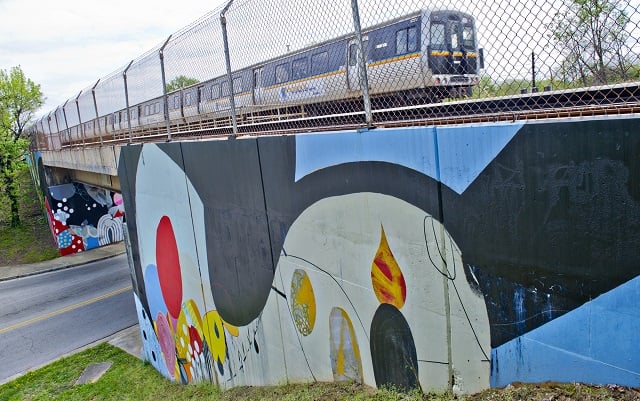
A MARTA train passes over the mural at the corner of Dekalb Ave. and Arizona Ave. on Thursday, April 17, 2014. Photo by: Photo: Jonathan Phillips

